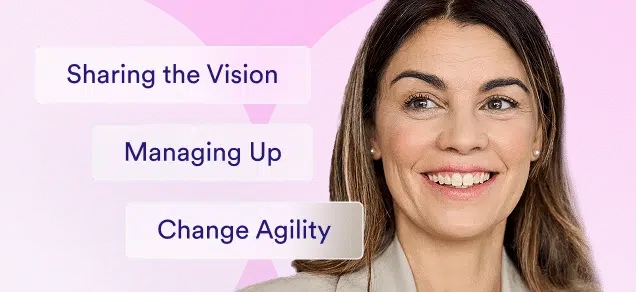Sam Levine: Something that I want to talk to you more about is inclusive design and what that has to do with allyship. I know Uber was an important part of your professional career so I’m curious what you learned during your time at the company around allyship?
Malcom Glenn: The state of allyship at Uber evolved in such a short period of time, it’s really remarkable. To give you a little bit of perspective, before 2013 there was an intense, robust, and rather emotional internal debate at Google about whether the company would release internal diversity numbers for employees to see. There were tons of internal people advocating for the company to release the numbers, and ultimately, the company did. This was really important at the time because almost no tech companies had ever released their internal workforce demographics. That internal advocacy really made a difference.
Many of those internal advocates were a part of Google's employee resource group for black professionals, which we used to call the Black Googler Network, or BGN. They put so much on the line in order to get us to take what I think we would all now call a relatively small, simple baby step. They were actually asking for a lot more than what Google was willing to deliver at that point—they wanted Google to release its numbers externally and they wanted to know what Google was doing to make the world a better, more equal, place.
Over time, an important question picked up traction: ”What was Google's impact in the world?” People wanted to answer more than just “Does Google have enough black/female/underprivileged-background employees?” People were asking questions like, “is Google's search algorithm biased?,” “Are we doing enough as a company to make low priced hardware?,” “Are we serving people in poorer parts of the world?,” “Are we building digital products for every type of person and every type of need?” and more.
Asking those questions was important for a couple of reasons. Firstly, now there was real skin in the game. These people were challenging their bosses and senior leaders at one of the most recognized global companies in the world. They were risking one of the most important things that anyone has: their job security. The second was internal advocacy, they were pushing the company to think beyond internal diversity as an end. They saw diversity and inclusion go beyond just saying that you have a workforce that reflects X, Y, or Z race, gender, religion, etc. Now, the question to answer became “What does Google do to help X, Y, and Z users out in the real world?” Every company, institution, and government agency that produces something that serves the needs of specific people has a responsibility to design inclusive products and services that better serve their diverse customers. Understanding how your business impacts underserved communities is really important and is a real example of allyship in action.
So what does having skin in the game mean? It doesn't mean mouthing off to your boss. It doesn't mean calling your senior leaders’ decisions foolish. But it does mean asking tough questions. It does mean being willing to disagree with people around issues that seem outside the scope of a conversation. That was something that I saw for the first time in my career at Google, but I think it's a lot more apparent in companies today.
Sam Levine: I want to take a moment to ask you about a picture I found on your website. It’s a photo of you, American Civil Rights Activist Jesse Jackson, and Travis Kalanick, the co-founder and former CEO of Uber. Could you share a bit more context around why this picture exists and what your experience meeting such influential men?
Malcom Glenn: Let me start by sharing a bit of context from before that photo was taken. As I mentioned, I spent about three years at Google before I left to pursue what I talked about at the beginning of our conversation—these questions around how you integrate inclusivity into the physical world and how you integrate questions of equitability within communities. In the fall of 2015, I joined Uber as a Strategic Partnerships Manager, to lead the company’s relationship building efforts with third parties. I was focused on building allies who could help bolster our policy issues—and Uber was and still is today a company that has no shortage of policy issues with which to deal. At that time, as I think everyone probably knows, there were some pretty big cultural issues at the company. But I was not focused on that stuff, I was focused on building allies to bolster our policy work.
At the beginning of 2017, a couple of things started to happen. One was a woman named Susan Fowler wrote a blog post about a horrific experience she had as an employee at Uber. Then, the CEO was caught on tape berating an Uber driver and that threw the company culture into the spotlight. People were asking “what does the internal culture at this company look like?” One of those people was a man named Jesse Jackson. Reverend Jackson wrote a letter to the company asking to meet Travis Kalanick, the co-founder and CEO of Uber at the time. Travis had never met him, but Rev. Jackson wanted to have a dialogue about what we were doing in regards to the issues that were in the news at the time.
Again, just for perspective, I was not involved in this work. I was building relationships with third parties and focusing on policy work. Diversity and inclusion was not my role. But when the letter from Reverend Jackson came, I was asked by the company’s senior leaders to go to Chicago, sit down with Reverend Jackson, someone from our internal D&I team, and Travis to talk about Uber’s cultural issues.
I was of two minds on the issue. On one hand, this was an amazing opportunity. I wouldn't have that photo today, if someone hadn’t someone tapped me on the shoulder and said, “Let's do this. Malcolm, go ahead and do this work.” On the other hand, I asked myself, “Why am I being looped into this? Diversity and inclusion work isn't my expertise.” But when the senior leaders at your company ask you to do something, you just say yes. So I said yes. But in the back of my mind was this question, “Why me? Why am I going? Why was I chosen to have a conversation with a leading activist from the black community who wants to discuss diversity and inclusion at Uber.”
At the meeting, we had a phenomenally interesting conversation. You wouldn't believe it, but Travis Callen and Jesse Jackson have more in common than you would think. We built the bridge around diversity and inclusion and we left feeling good about that work. I came back feeling like I had done something really valuable in the context of my career. But still, I couldn't get out of my mind this question that I was tapped because of tokenism. I wrestled with that question for a while. If I'm being honest, there were not as many people in the company who I felt comfortable going to with those questions.
But, I wanted to put a positive spin on it, I wanted to look at why this was valuable in the long term. I looked at my own life and realized that I didn't have enough people in my network who were supportive of and advocating for these issues. I asked myself, “Is there a way for me to fill the role I don’t see other people filling? Is there a way for me to be an ally to someone else? Is there an opportunity for me to alleviate someone else having to bear the burden of being who they are?” That’s when I started realizing my interest in helping historically marginalized groups.
Sam Levine: I wanted to touch on something that you just mentioned, which is really the tension point between was I chosen because I’m the best fit for this role or because of the color of my skin. What would you have prefered to happen in a situation like that?
Malcolm Glenn: This is such a wonderful question. There are so many amazingly effective, capable, thoughtful, intelligent, brilliant people who come from underrepresented backgrounds, and oftentimes, they bring expertise, awareness, and thoughtfulness on a whole host of issues. The way to practice true and meaningful allyship is to call on them for their brilliance, while recognizing that they are underrepresented, but don’t just call on them for the issue of their underrepresentation. I think that is deeply, deeply important.
It can be valuable to tap a person because they are oftentimes not the type of voice in a room, but don't just tap them for the purposes of talking about those voices. That was what really stuck out to me. I thought I was totally able, capable, more than well-suited to go and have a conversation around D&I with my CEO and a civil rights leader. What I didn’t appreciate was that the only time I was getting called upon was when the company needed help talking to this one black guy about black issues.
It is really valuable to take into account a person's background, what they look like, and their experiences, but don't only call on them to speak to those issues. I was happy that I got the opportunity, but I recognized that I had that opportunity in part because I was seen as a guy—a black guy—who could speak on black issues.
Sam Levine: Thanks for that, Malcom. I just want to touch on the difference between effective allyship and performative allyship. Before this call, we talked about how folks in marginalized black and brown communities have been skeptical of new allies who are joining the Black Lives Matter movement and sharing #BLM on social media. Just because you use the hashtag doesn’t mean you’re really serious about the movement and willing to put in the hard work.
What are some ways allies can build trust, especially with folks who might be more skeptical of their authenticity?
Malcom Glenn: This has always been such an important question. Right now, the barrier to so-called activism is way, way too low. Some people have coined the terminology “slacktivism” to speak to how people want to show allyship, but don't want to do any of the work it takes to actually be an ally. In the last two months, slacktivism has become super apparent in the context of the Black Lives Matter movement. For me and I think for many other people like me, this has felt like a collective gaslighting on behalf of black people.
This is how it comes off. This notion that, for your entire life and the lives of the people who came before you, black rights have not been important to you. But now, suddenly, they're important to you. It’s no surprise that people who have been fighting these fights for ages are distrustful of these newcomers. I only know about the context of these fights for the time that I've been alive, but as people marched in the streets two months ago to protest the murder of George Floyd, that felt like a unique groundswell turning point. People have been protesting the murder of black men for years and years. My phenomenal colleagues fought when Michael Brown was killed, when Tamir Rice was killed, and when Philando Castile was killed. This fight is not new.
The question I have for these new allies is what are you going to do that actually has some stakes? What are you going to do to put some skin in the game? Posting a Blackout Tuesday #BLM picture on Instagram doesn't actually do anything and it doesn't cost you anything. This might be a little bit uncomfortable, but that's kind of the point. Real allyship means having some skin in the game. Being willing to lose something—it doesn't have to be losing your life, your house, or your job—but being willing to risk something on behalf of these folks.
Whenever I’ve seen real, valued internal advocacy take place in the workplace, it usually happened when people were willing to put something on the line. And in turn, it made me trust them. It made me believe that this individual would be willing to put something on the line for me. There are a lot of people, including many really, really important people in my life, who have never done that. And while I trust them on a whole host of issues, I do not trust them as an ally. I don't think one can truly be a legitimate ally unless they are willing to put something on the line.
Sam Levine: Thanks, Malcolm. I want to discuss more about the practice of putting skin in the game. For companies, putting skin in the game can be prioritizing inclusive design. How can companies practice allyship by focusing on inclusivity and designing products that can have an impact on external communities?
Malcolm Glenn: We talk about D&I so much in the context of numbers. “What does senior leadership look like?,” “What does the board look like?,” “Who is the CEO?,” etc. While that’s all important, the conversation often stops there. In reality, I think that is just the starting point.
The conversation should be: How do we get diverse people into those companies? How do we fill every team with people who are representative of the world? And then, how do we make sure we’re building inclusive products and services that better serve our diverse customers?
Inclusive design is basically the notion of taking into account all of your users’ needs—meaning all of your users and all of their needs. This is more easily understood in the context of product work, but I think it applies everywhere. Everyone is producing some output and it’s important to know how that maps back to inclusivity, not only internally, but also externally.
As I was thinking about my own journey and trying to become an ally myself, I looked to folks who were not like me to see if I could lift up their voices and put some skin in the game for myself around making their experience better. The Uber product touches millions of users every day, but at the same time, many users couldn't use our service. One of the groups, for which this was particularly the case, was the disability community. Uber drivers are typically individuals driving their own cars to pick up riders. For wheelchairs users, particularly power wheelchairs, if you couldn’t transfer from a wheelchair to a traditional seat in a four-door sedan, you couldn't use our product. That was hugely problematic if we really wanted to think about ourselves as an inclusive company. We were improving our diversity statistics internally, we were bringing in more diverse senior leaders, but we still had a lot of issues around how we were building a platform that worked for everyone. I raised my voice to say we were not doing enough to serve our disabled customers. I wanted to be an ally by instilling the importance of inclusive design internally at the company.
The first thing I did was have conversations with people with lived experience. I knew my voice was less important than theirs and I wanted to learn from them. I had many conversations with people from the disability community about why Uber worked for them and, more often than not, why Uber didn't work for them. I brought those voices and their experience up to the senior people at the company. Then, to make sure that I was practicing what I preach, I wanted to put some skin in the game. I said, “We need to make some meaningful investments so we can actually improve the experience for these people.” That meant building partnerships outside of our traditional business model to bring wheelchair accessible vehicles onto our platform and with transit agencies to ensure we were making an experience that was useful and efficient for the people who were depending on our service. All this would be a significant cost to the company.
I had to say, “Hey listen, this might be a challenge for us as a business in the short term. Let's do something that might not be advantageous for the business.” I was met with derision and dismissal. It was challenging to go to senior leaders and make those pitches and oftentimes it was probably not in my best interest, but I was trying to be an ally in the best way that I could be. On behalf of the disability community in this case, I wanted to instill in folks this notion of inclusive design. And whether you're being an ally or not, that notion is really important. Make sure diversity and inclusion does not just end at bringing people who are reflective of the world into your company, your institution, your government, or your agency. Make sure that whatever you're doing also reflects the needs of people in our world. That's the more challenging part of that equation and, when done effectively, the most rewarding and important part. Who you're touching as a company is in many instances bigger, more substantive, and more influential than simply the people who work in your institution.
Sam Levine: Beautiful. Thanks, Malcolm. I want to make sure we have time for questions, so I'll just throw one more before we jump into that.
I'm going to play the role of a corporate exec focused solely on the bottom-line and say, “But Malcom, that's not good for profits.” How does the prioritization of profit vs. making an impact need to shift in order for allyship to be amplified within organizations?
Malcom Glenn: Many private industries are driven by short term business gain. How much money are we going to make? What's going to be the impact on our growth numbers? How is this going to increase the valuation of our company? It's foolish to only prioritize those things and it's short sighted. And it really undervalues inclusive design and inclusivity as a principle throughout all parts of an institution.
So, what I always said was, do you want to make a business case for tomorrow? Or do you want to make a business case for when you've grown 3, 5, or 10 times in 10 years. The real business case for inclusive design is not how we're going to do next quarter, next year, or next fundraising round. It's how we are going to position ourselves as a regional, national, or global institution. That is a challenging notion for a lot of senior folks at companies to internalize. But, if you look at companies that really make inclusive design a meaningful part of the fabric of their company, they are the ones that prioritize long term thinking and goals.
Again, this is not an easy argument to make at any company. That's kind of the point of real allyship—putting some skin in the game and doing challenging things. If you do that well and bring other allies into the fold, you will find that the long term gains are more effective. You really have to have that long-term standing argument. I think the companies that are most successful are the ones that do that well.
Q&A: Do you have any thoughts on what companies are modeling good allyship internally and externally? Are there some best practices that you're seeing at certain companies right now that come to mind?
Malcom Glenn: Great question. I don't want to use an example of a place where I work or have worked because I'm a little bit biased, but I think there's something to be said about institutions that build products or tools that reflect the people you know. For a company like Mattel, the toy maker behind Barbie dolls, it’s really important that they take into account everyone who wants to buy a Barbie doll in the world—not just the people who look like what Barbie dolls have looked like for most of history. Ultimately, Mattel was late to this, but now they have a more inclusive line that includes dolls of all sizes, shapes, colors, and abilities. The companies that have embraced creating products and toys that are representative of the world see the long-term value of growing their customer base and creating products that appeal to a larger audience.
We've seen that representation matters just recently when the first black woman was nominated as Vice President for a major party ticket in the United States. Politics aside, there are many people who see themselves in her in some way and are moved by her existence on a major party ticket. Companies need to think about that. We don't have to fundamentally change our business models, but we can integrate representation into our output. This acts as a valuable example to other companies about the steps that you have to take to position yourself as a company with meaning, significance, and substance in the long term.
Q&A: How can we create a corporate culture of humility so that real learning can take place? White supremacy is so ingrained in corporate DNA that it takes a global crisis for incremental progress to be a possibility. Do we have to wait for something even bigger?
Malcom Glenn: This is a question for which I don't think I have a great answer, but I think it's worth a little bit of dialogue. One thing I didn't touch on that is elemental to everything I’ve spoken about today and elemental to the barriers in every institution is white supremacy. The reason I think this is such an important conversation to have is we need to step back. I would love for us to get to the point where we are ready and capable as society to talk about corporate cultures that push back against white supremacy.
What we need before that—and we are still early in the process—is a foundational and honest acknowledgement that white supremacy exists in every institution. We are not yet there. We are not even there as a country. The United States of America is a country that was literally founded on the backs of black people who were considered subhuman for so many years. Every single advantage that this country has is rooted in that notion, that very practical economic situation. That’s why it’s no surprise that our corporate cultures have this innate bias built into them as well.
There are lots of really amazing efforts that have pushed that conversation forward in a robust way. The 1619 Project in the New York Times last year was a beautiful example of recognizing the roots of white supremacy and particularly slavery in the context of every American institution. The more educated people are on these inequalities, the more we can start to make progress around dismantling those biased systems. So while I don't know how we should address corporate culture now, I do know that we need to start at the foundations of this country. Hopefully with time, we’ll get there as a country and then we can start to get there in other institutions, as well.
Q&A: I’d love some examples or tips on how to coach my staff to be allies in the workplace. How can a manager help their employees lean into allyship every day of work?
Malcom Glenn: For so many people being in the minority is a part of their everyday lives, but there are also many people who have never been in the minority. I think a real way to think about what allyship means is to put yourself in a position where you depend on allies or depend on people outside your group to help move the ball forward. If you work in a corporate office where most people are white, straight, and male and you are not, what challenges do you face when you need to accomplish something but don’t look like anyone in the room. That's challenging.
It's challenging not just from a practical perspective, because most people have friend groups, family, and general networks that are homogenous. That's kind of the point—we all need to push ourselves to go outside of the people in our immediate orbit. Find spaces where you have to look to other people to have your voice heard or where the senior leaders have a fundamentally different background than you do. Then, create actual intentional structures around doing that. Give people space in the context of their jobs to go out into communities where they find themselves looking or depending on allies. It requires deliberate effort.
I think if we could get to a point where institutions really prioritized creating those systems and encouraging and aggressively putting people in those opportunities, then allyship would not be something that was theoretical. It wouldn't be something quite frankly that we needed a Hone session about it, it would be something that was instilled in and lived by people, whether it's the core of their work, some subset of their work, or just some part of the work that they do. Now, you're starting to see people do that in a context of really forward-thinking diversity and inclusion initiatives, but it's still far from the norm. Until we get to the norm, you're still going to see people struggling with allyship unless they have real experience depending on allies themselves. Unfortunately, in the context of many of our corporate cultures, that is not most people.
Sam Levine: In closing, what is something that you want folks to leave here with today?
Malcom Glenn: My takeaway would be that this isn't about talk. Don't just talk about change, be about it. It’s easy to engage in slacktivism, but the only way to prove yourself as a true ally is to put some skin in the game. You have to remember that is what the people for whom you are trying to be an ally experience every single day. We won’t make any real progress until everyone has some skin in the game.
People need to lift up the voices of people who are underrepresented and marginalized and turn to them for all of their expertise. If you're black, not just for the black issues, if you're trans, not just for the trans issues, if you're a person with a disability, not just for the disabled issues, but for all of their areas of expertise. When you acknowledge who a person is, acknowledge them for everything that they know. Allyship can become something that everyone practices. It's not easy. It requires real risk, but that’s the only way that we will move ourselves forward.











